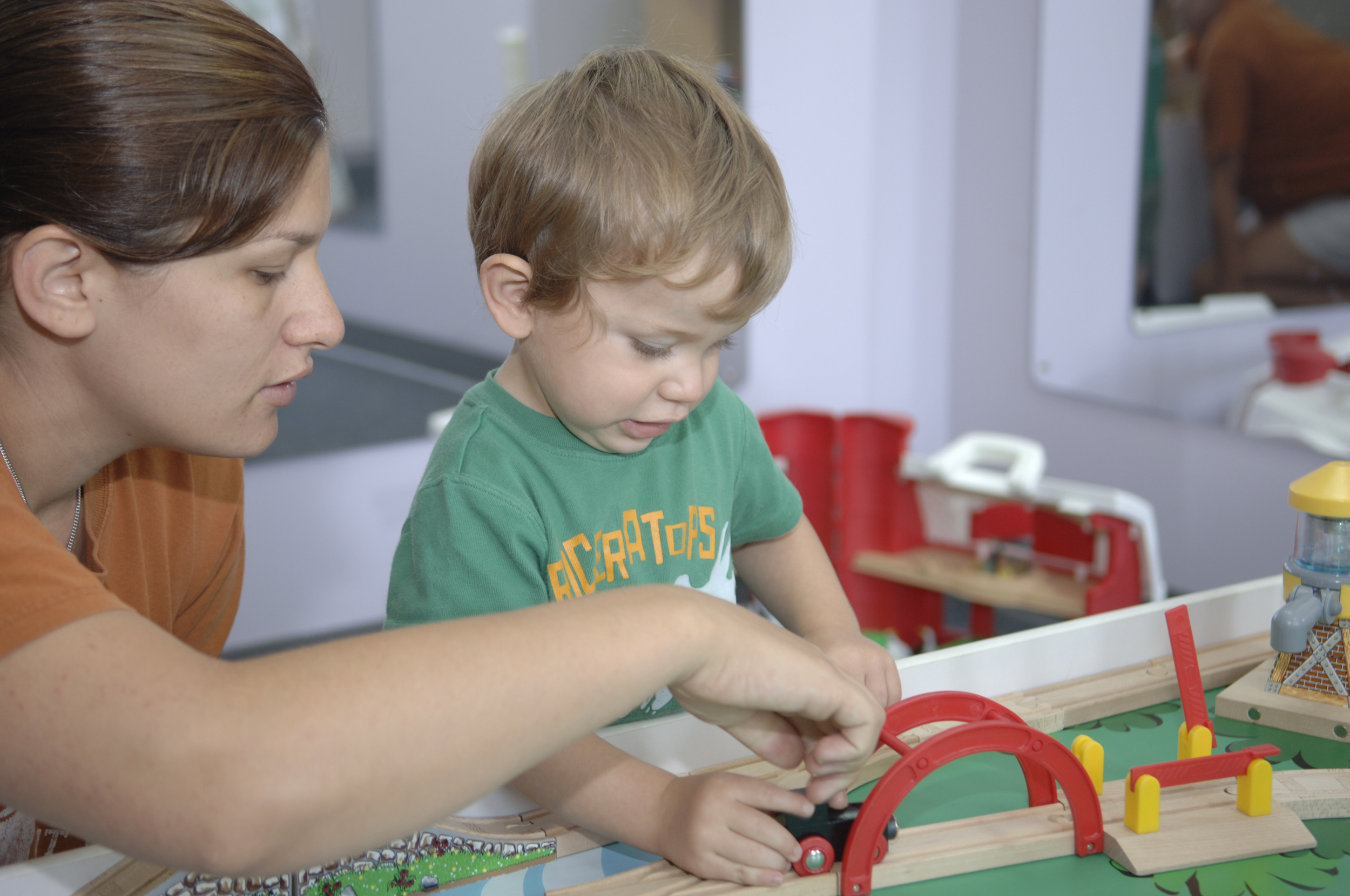How do I play with my child if he has no interest in playing? Learn about DIR-Floortime®
Play with your child. This is the idea behind Dr. Stanley Greenspan’s approach: DIR-Floortime®. He developed this model in the 1980’s to help children on the autism spectrum develop to their full potential. In Greenspan’s model, the “D” in DIR stands for development. Having a clear understanding of where the child is developmentally is crucial to being able to build on their capacities. The ‘I” stands for individual differences. DIR-Floortime® takes into consideration the unique ways a child will take in, respond, and regulate the sensations from his body and surroundings. Certain processing issues may be hindering their ability to grow and learn. The “R” stands for relationship-based. It is through relationships with parents, caregivers, therapists, peers, and educators that the child develops. The interactions take into consideration the child’s individual differences, builds on their developmental level, and helps them progress socially, emotionally, and intellectually.
Floortime is about taking the time to engage and play. The difference from regular play is that you have a developmental role. What if my child has no interest in playing? This is where DIRFloortime® can help. You follow the child’s lead and play with what interests them. You follow Floortime guidelines. Using a relationship-based approach, your child can learn and engage more actively. Rather than focusing on isolated behaviours and specific skills, the objective of DIR-Floortime® is to build healthy foundations for social, emotional, and intellectual capacities. Research supports that DIRFloortime® has helped children on the autism spectrum with their development.
Learn more! DIRFloortime® training will be in Montreal, QC on November 27th and 28th 2017.
Register today. Early bird special ends soon. For more information: www.choosetolearn.ca or 450-242-2816 or info@choosetolearn.ca.
Research studies supporting DIRFloortime®:
Casenhiser D, Shanker SG, Stieben J. (2011) Learning Through Social Interactions in Children with Autism: Preliminary Data from a Social-Communications-Based Intervention. Autism 26 Sept: 1-22.
Dionne, M. & Martini, R. (2011). Floor Time Play with a child with autism: A single-subject study. Canadian Journal of Occupational Therapy, 78(3), 196-203.
Greenspan, S. I. & Wieder, S. (1997). Developmental patterns and outcomes in infants and children with disorders in relating and communicating: A chart review of 200 cases of children with autistic spectrum diagnoses. Journal of Developmental and Learning Disorders, 1, 87-141.
Greenspan, S. I. & Wieder, S. (2005). Can children with autism master the core deficits and become empathetic, creative and reflective? A ten to fifteen year follow-up of a subgroup of children with autism spectrum disorders (ASD) who received a comprehensive developmental, individual-difference, relationship-based (DIR) approach. Journal of Developmental and Learning Disorders, 9, 39-61.
Liao et al. (2014). Home-based DIR/Floortime Intervention Program for Preschool Children with Autism Spectrum Disorders: Preliminary Findings. Physical & Occupational Therapy in Pediatrics, Early Online:1–12.
Pajareya, K. and Nopmaneejumruslers, K. (2011) . A pilot randomized controlled trial of DIR/Floortime™ parent training intervention for pre-school children with autistic spectrum disorders. Autism, 15(5), 563-57. en with autistic spectrum disorders. Autism: The International Journal of Research and Practice, 15(5), 563-577.
Solomon, R., Nechels, J., Ferch, C. & Bruckman, D. (2007). Pilot study of a parent training program for young children with autism: The PLAY Project Home Consultation program. Autism, 11, 205-224.


Leave A Comment